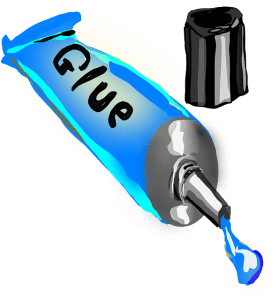Do you expect perfection? Do you live or work with someone who does? Here you will learn all about how to understand what makes them tick.
better relationships
Do You Live with a Procrastinator?
Living with a procrastinator can be frustrating to say the least. However, learning to understand them, what makes them tick, is key to better relationships.
Dealing with a Procrastinator?
Patient and stabilising communicators …
My passion is teaching people how to communicate authentically and effectively in any situation. Today we will focus on the patient and stable communicator.
This steady gentle style is one that is warm, welcoming, all about relationship and somewhat more reserved than the playful or powerful styles. They can really struggle with procrastination, they like to change at their pace, if at all.
These guys are all about consistency, predictability and people. There is no doubt you would have someone with this style in your life, as this is the most common communication style.
This style is often described as the glue that holds us all together. While the Powerful style is trying to control things and make decisions the playful style is all about fun, the Patient style is consistent, caring and loyal.
This style craves predictability, they love processes if someone else sets them up, they will follow the right leader to the very end, and they are committed to their cause. They will work quietly without the bells and whistles to get the job done.
Don’t expect noise and fan fare. They are reliable and work to a slower and steadier pace. They will not cause an uproar and are not likely to speak out against things. These guys will avoid conflict like the plague, are slower to speak up and want everyone to get along.
I am surrounded by this gentle style, as it is the complete opposite to my powerful and perfectionistic traits. This style is calm, serene, and peaceful. They don’t get easily flustered and have the best poker face around (they rarely show their emotions on the outside).
When this style is understood they are a loyal team member; they promote calm and stability and will work tirelessly for a cause. When misunderstood they can seem quiet, uninvolved, avoidant even passive aggressive.
Change is a really big issue for these guys, they crave consistency even if it is destructive. They are quite like the ostrich putting their head in the sand thinking the issue will just go away. As you may imagine, facing an issue and trying to work through with this style, can be extremely difficult. The harder you push the more they shut down.
However, as it is with all of the styles each of us brings our own unique strengths to the table. The patient and stable style brings about much needed calm and consistency, without them it would feel like utter madness.
If you are a patient communicator and are struggling checkout our resources page or contact us with your specific questions. For training to learn more about your style and how to get the most out of your relationships the get in touch.
If you would love to understand yourself or others more then why not learn about your communication DNA.
Until next time, Care, Connect and be a Conscious Communicator
Let’s change our world for the better one conversation at a time
Struggling to deal with a Powerful and Direct Communicator?
Direct styles of communication…
My passion is teaching people how to communicate authentically and effectively in any situation.
Did you know that there are different communication styles? Such differences can wreak havoc in our relationships, sometimes we just don’t get each other!
We all have our own communication style. Some people are task focused while others are people focused. Some are outgoing while others are reserved.
One of the four main styles is the Direct and Powerful communicator. They are action based, outgoing, task focused, results oriented and for the rest of the population they can be quite challenging. If this is your style, however, chances are you are not even aware of the impact you can have on others.
Direct and Powerful Communicators are motivated by challenges, they love problems can be highly competitive and extremely strong willed. If you want something done, give to this person. However, be aware they may leave bruises.
These guys really have no idea how straight down the line, no fuss, in your face they can be. To the average person they can seem aggressive, even like a bully. Sadly, this is not their intent at all. They are just after the result and if people get in the way, then that’s where the damage can occur.
This is my strongest style and I have been known to mow people down in the supermarket, I literally don’t see them. I am focused on the task and the task is to complete the shopping. It’s not to say “Hi”. To see who I know, to window shop. No, its get the items bag them and get out of there! I have had friends come up to me days later and say they felt really upset when I ignored them, I honestly did not even see them.
This powerful style gravitates to leadership and management roles where they can make decisions and have control. Unfortunately unless enlightened they can cause trouble for others. Problems arise because they are so fast paced, quick thinking, decisive and you got it – direct.
Don’t be too hard on the direct communicators in your world. They really have a good heart and don’t realise how pushy and direct they can be at times. Why? Because I don’t think anyone has been brave enough to tell them!
Next time we will look at the Playful Influencing communicator.
If you are a powerful communicator and are struggling checkout our resources page or contact us with your specific questions. For training to learn more about your style and how to get the most out of your relationships get in touch.
If you would love to understand yourself or others then check out your Communication DNA
Until next time, Care, Connect and be a Courageous Communicator. Let’s change the world we live in one conversation at a time.
The 6 Steps to Intentional Communication
What does it mean to be intentional? My first book was called the Enlightened Communicator; it was all about raising your awareness so that you can become a better communicator.
I have now moved toward “Intentional Communication” because awareness alone does not cut it. You also need to put some action into it. You need to be Intentional.
Being Intentional means to do something with a purpose or deliberately. Your actions have a purpose. It is important to be aware of what is going on around you, you will have noticed the number of articles and prompts about being mindful. Awareness and acceptance. Very powerful.
However, I am asking you to take it a step further, not only to be aware, to accept but to do more. I want you to stop and think about what you need to do to take your communication in the direction you want it to shift into. For example, in your relationship with your child, do you need to encourage them? Correct them? Scold them? Be gentle with them?
In a relationship with a key work colleague do you need to thank them? Correct them? Advise them? Give them feedback? Again each of these actions will come with a different intention.
For many years I have noted the effect of communication done badly after some type of painful incident. Something goes wrong, there is an effect and communication seems to slide ineffectively right down the hill.
For example, imagine you’ve woken up and feel like it’s not your best day. Let’s say you’re having a bad hair day. To say you feel lacking in confidence is putting it lightly. When you get into work, a colleague makes a sly comment and you take it completely out of context and get offended. They arc up and defend themselves; after all they were just having fun.
Next time you see him you avoid him all together, he then assumes that you really dislike him and he gets even more defensive and hurt. Before you know it you are both now lurking into the murky depths of toxic unhelpful communication.
Over the years I have delved into the depths of this toxic communication and helped people to sort it out. Why? Because I’ve been there; personally and professionally. It’s not a nice place to be. To get out of this awful place you need to get Intentional.
There are steps to Intentional Communication. I will outline them here but expand on them in coming posts. The steps are;
- There is an impact or crisis moment
- There is a wound or pain after impact
- We look to treat the current wound
- The wound begins to heal
- A scar forms
- The final stage we aim for is a strengthening after the process
This process can be linear but also can be shortened depending on how treatment and healing is approached. Some times you go for the quick fix that doesn’t really work and this means that the process is invariably lengthened and complicated.
Next time we will discuss the first stage in detail – the impact.
Until next time Care, Connect and be and Intentional Communicator
Let’s improve the world one intentional conversation at a time.
The Conscientious Communicator And Emotion
 The Perfect and Conscientious Communicator and emotion. Lets just go back and be re acquainted with the lovely conscientious style.
The Perfect and Conscientious Communicator and emotion. Lets just go back and be re acquainted with the lovely conscientious style.
This amazing style is all about procedures, processes and perfection. The Perfect and Conscientious Communicator works to a system or order. If there is not a good system they will develop their own system or order. However, this style will work to someone else’s system or process if they agree with it, or if they see it as correct. If their work is changed or corrected, they will ask why? Their work is always completed to their base level of perfection so what could possibly need to be changed?
This communication style is all about getting things right. If you know someone with this style, they are more reserved and task focused. They are great at details, probably love stationary, (known from personal experience), and are highly organized in many ways. They tend to work in highly technical or exacting work environments.
In workshops its evident who the Perfect and Conscientious style is as they are the ones who find any spelling errors or grammatical issues in any handouts or workbooks, (not that there is that many…..). Gotta love them!
These guys are fearful of their work being criticized, how could they not be when perfection is their benchmark. Beware of criticising their work as they put a lot of effort into it being right. It hurts them intensely if they are corrected, especially if it is not done gently.
The emotion they show most often is worry or anxiety, they put a lot of pressure on themselves, you know, to be right, to be perfect. It’s not easy; in fact it’s impossible. On the surface this style may not seem to show emotion, they may come across as distant, even aloof, but they feel deeply.
So, if you are dealing with a Perfect and Conscientious communicator, be sure to be kind and respectful when you give feedback, be diplomatic and have your facts and figures straight. Stop and think, what it is like for them to be expecting to be perfect all the time, what a burden.
Consequently, if they come across as judgmental or overly critical, they are actually trying to help. It may not feel like it but that is their intention.
If you are a Perfect and Conscientious Communicator and you feel like sometimes you are misunderstood, why not learn more about your strengths and how others may perceive you? It is such a great investment in yourself. You can learn more by reading “The Enlightened Communicator”. It can be purchased here. Also keep an eye out for a new service we are introducing shortly on how to understand your style.
Until next time, Care, Connect and be a Courageous Communicator. Let’s change the world we live in one conversation at a time.
The Patient and Steady Communicator And Emotion
 The Patient and Steady Communicator and emotion. Let’s just go back and be re acquainted with the lovely stabilizing style.
The Patient and Steady Communicator and emotion. Let’s just go back and be re acquainted with the lovely stabilizing style.
The Patient and Steady style is one that is warm, welcoming, all about relationship and somewhat more reserved than the inspiring or dominant styles. These guys are all about consistency, predictability and people. There is no doubt you would have someone with this style in your life as this is the most common communication style.
This style is often described as the glue that holds us all together. While the Powerful and Direct style is trying to control things and make decisions, the Playful and Influencing style is all about fun, the Perfect and Conscientious style is all about systems and perfection, (more next month) and the Patient and Steady is consistent, caring and loyal.
This style craves predictability, they love processes if someone else sets them up, they will follow the right leader to the very end, and they are committed to their cause. They will work quietly without the bells and whistles to get the job done.
Don’t expect noise and fan fare. They are reliable and work to a slower and steadier pace. They will not cause an uproar and are not likely to speak out against things. These guys will avoid conflict like the plague, are slower to speak up and want everyone to get along.
In terms of Emotion, these guys can be a hard nut to crack. They don’t tend to show emotion. Sad face, happy face, same face. These guys are the poker face of the styles. Why? It’s mostly about protection.
This style feels things really deeply, in fact they may feel things the most, however they don’t show it unless they feel incredibly safe and secure. You cannot push this style to show themselves, they have a backbone of steel. They also do not like confrontation or conflict so will happily avoid it, often to their own detriment.
In the wrong conditions this style has made procrastination and avoidance an art form.
If you are a Patient and Steady Communicator and you feel like sometimes you are misunderstood, why not learn more about your strengths and how others may perceive you? It is such a great investment in yourself. You can learn more by reading “The Enlightened Communicator”. It can be purchased here. Also keep an eye out for a new service we are introducing shortly on how to understand your style.
Until next time, Care, Connect and be a Courageous Communicator. Let’s change the world we live in one conversation at a time.
The Playful and Influencing Communicator And Emotion
 The Playful and Influencing Communicator and emotion. Let’s just go back and be re acquainted with the lovely Influencing style.
The Playful and Influencing Communicator and emotion. Let’s just go back and be re acquainted with the lovely Influencing style.
The Playful and Influencing style is one that is warm, fun and engaging. These guys are all about relationship and having fun. If you know someone with this style they can range from warm and friendly to zany and the life of the party.
This style does not care so much for organisation, rules, processes, work – it is simply not exciting or fun enough. As you can imagine, if you work with this style and don’t understand them, you could be having some frustrations. These guys are very good at motivating and energising people to do the work, not necessarily doing the work themselves.
The most common emotion these guys show is Optimism. They are very friendly and trusting. Something they need to be aware of because not every one deserves their trust.
This Playful and Influencing style is all about recognition and are very much about people. So if someone hurts them, it can cut deeply. They may not show it though as they usually have so many options, they will quickly move onto the next friendship crucial.
This can actually have a stronger affect on the people in their lives who feel left out. Don’t take it personally if your Influencing friend is there one minute and gone the next. They do care, they just need to socialise to stay alive, it is truly like their oxygen.
The Playful and Influencing Communicator really has no idea how fickle they can seem when they move onto something new. They truly do not mean to hurt your feelings. So if you ever feel like this, it is important to share with them openly and kindly how you feel. It is crucial to be kind, they need a warm friendly style of feedback.
When this style is understood they make such great friends and teammates, when misunderstood they can seem selfish and self-centered. Like all of the styles, we need to understand the differences and work on how we can best unite to bring out the best in all of us. We all bring something special and unique to the work and home environments.
If you are a Playful and Influencing Communicatorand you feel like sometimes you are misunderstood, why not learn more about your strengths and how others may perceive you? It is such a great investment in yourself. You can learn more by reading “The Enlightened Communicator”. It can be purchased here. Also keep an eye out for a new service we are introducing shortly on how to understand your style.
Until next time, Care, Connect and be a Courageous Communicator. Let’s change the world we live in one conversation at a time.
Emotions and Communication

Emotions, we all feel them, every single day. Some of you feel them deeply while others prefer to ignore. Regardless, they happen all the time and they have a marked effect on your behaviour and communication.
An emotion is “a strong feeling coming from your circumstances, mood, or relationships with others”, or an “instinctive or intuitive feeling that is to be distinguished from reasoning or knowledge.”
Emotion can be like noise; it can confuse you, distract you and confound you. Have you ever felt an emotion so strong that you literally did not know what to do? It can be a very overwhelming experience. But your emotions are necessary. They are part of who you are. Learning to go with them, to feel them and then let go of them is a really healthy way to work with you.
Emotions need to be felt, acknowledged and processed. If you try and avoid them then they only grow. A feeling that is small can grow into a large beast that wreaks havoc if you try and ignore it.
A slight frustration can turn into rage if you allow it to grow, if you don’t feel it, experience it, process it and move on. Emotion can change how you relate to others also.
Have you ever noticed that as your emotion escalates, particularly negative emotions like sadness, frustration, anger, sadness, disappointment, confusion and grief, your ability to communicate slides downhill very fast?
It’s really poor timing because just when you need to communicate at your best, you are potentially performing at your worst. It’s critical that you understand for you how emotion affects your ability to communicate and what impacts you have when you are emotional.
For some, when they become emotional they tend to become angry toward others. They are perceived as negative, aggressive and confrontational. It is important to become aware of this and work to process your emotions in a way that does not harm your communication with others.
In coming posts we will share ways that different communicators can be perceived and how to ensure that you process your emotions in a healthy way so that they don’t affect your ability to connect with others. Your relationships and professional life is worth it!
Until next time, Care, Connect and be a Courageous Communicator. Let’s change the world we live in one conversation at a time.
Your Most Significant Conversation Part 5
 We have spent time speaking about your most significant conversation. Last time you were introduced to your chatter box. This is the unrelenting chatter that is with you 24/7. The voice in your head. This is without doubt your most significant conversation. If you haven’t read this then check it out here. We then delved into fear and how this fuels the chatter, you can check that out here.
We have spent time speaking about your most significant conversation. Last time you were introduced to your chatter box. This is the unrelenting chatter that is with you 24/7. The voice in your head. This is without doubt your most significant conversation. If you haven’t read this then check it out here. We then delved into fear and how this fuels the chatter, you can check that out here.
Then we talked about understanding your chatter. What are your fears? What holds you back? You can check that out here. Last time we spoke about having a good old CHAT with yourself and challenging the chatter so that you can achieve your goals, you can refresh your memory on this here.
To challenge the chatter all you need to do is FLIP IT!
Yep, that’s what I said, FLIP IT! All you do is grab that negative chatter, which in essence is a “What if?” followed by a negative statement – “What if I don’t lose weight?”
FLIP IT – “How great am I going to feel when I reach my goal, I feel stronger, I have more energy and I didn’t give up.”
“What if I make this call and they say No?”
FLIP IT – “How proud will I feel when I get this call done, regardless of the outcome I am getting better and better, soon I will be achieving my goals. I will no longer fear a No. If I don’t make the call the answer is always no!”
All you need to do is work out what you are saying to yourself that is causing the fear and turn it around to a more encouraging statement. I know it sounds too easy, and it really is.
Most of the time we are walking around unaware that this negative chatter is driving our behavior. This is one of the reasons it is your most significant conversation. By shining a light on it there is nowhere to hide, you have the keys to turn things around and have the life you dream of. All it takes is a few simple steps in the right direction.
Don’t be a slave to the negative chatter anymore, have a CHAT with yourself, FLIP IT and before you know it, you will be achieving more than you realised was possible
Until next time,
Until next time, Care, Connect and be a Courageous Communicator. Let’s change the world we live in one conversation at a time. ![]()









